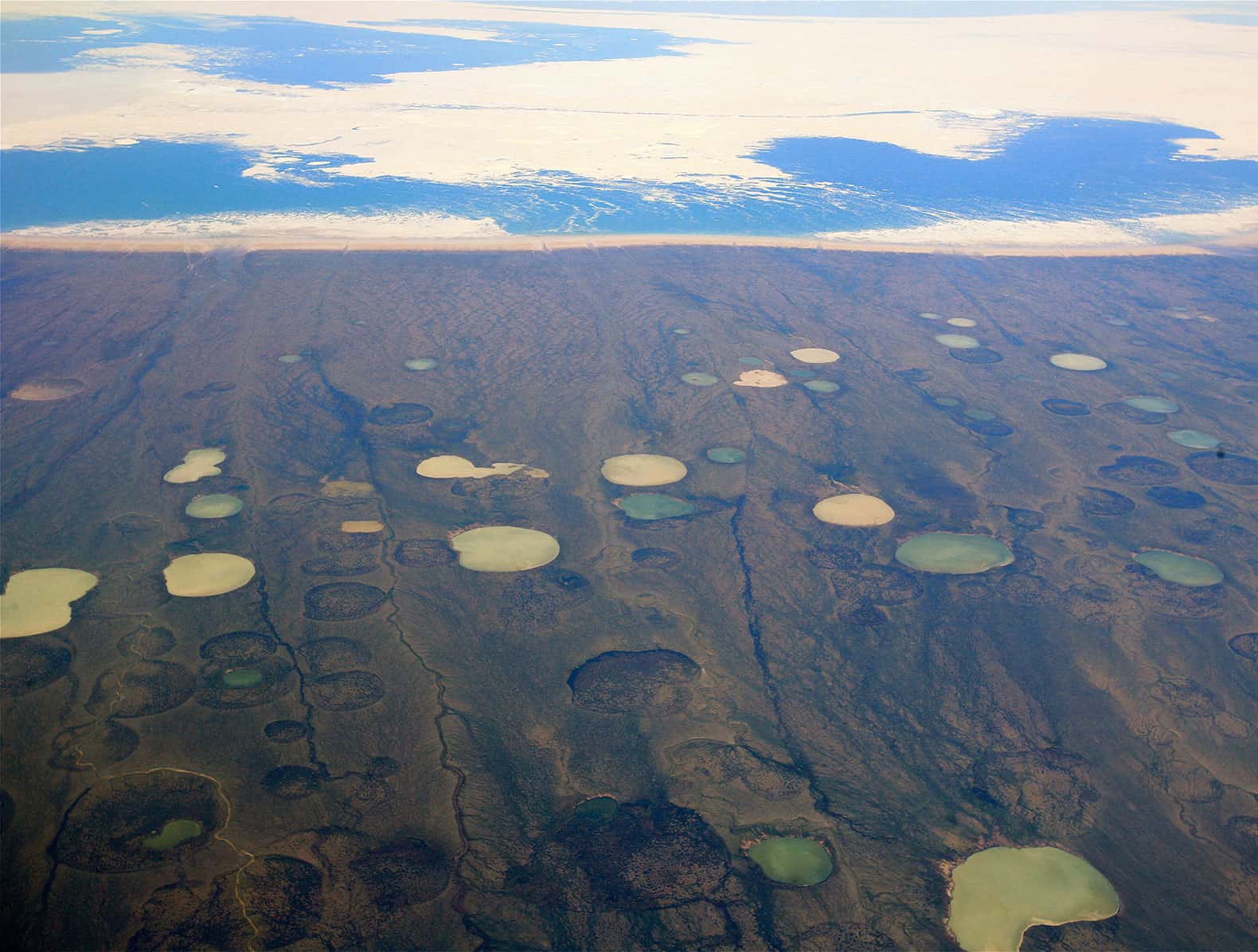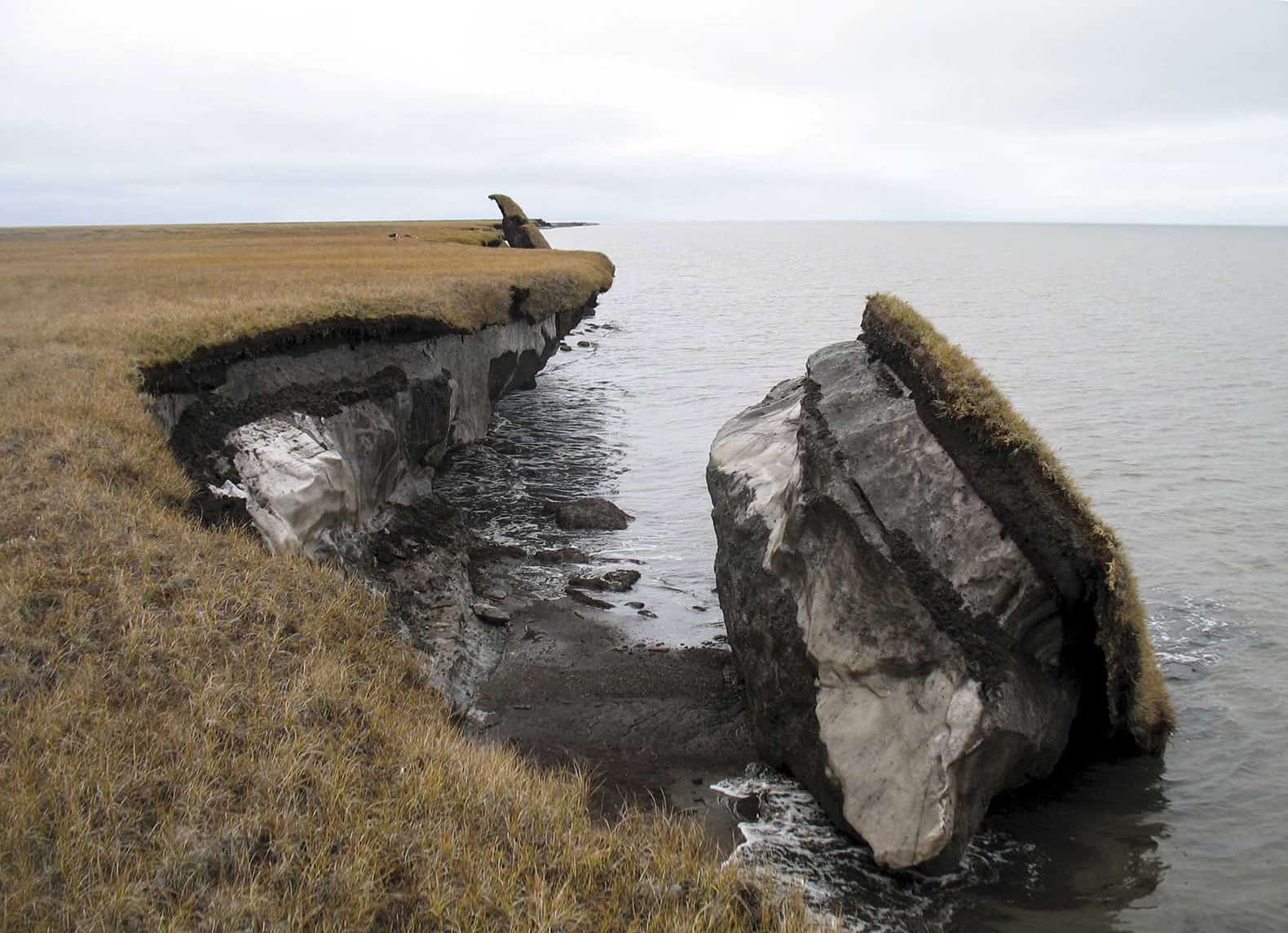
A huge area in northwest Canada is currently on track to significantly speed up climate change due to permafrost rapidly collapsing. Permafrost, which is also known more commonly as frozen soil, is currently collapsing across an area around 52,000 square miles, which is about the size of the entire state of Alabama. New research from the Northwest Territories Geological Survey (NTGS) has recently found that the current permafrost thaw is intensifying, which means that this dramatic disintegration could worsen climate change. This means that the carbon that was bound up inside the frozen mud and dirt is now free to be released. As the newly melted permafrost continues to break down, the methane will be directly released, prompting an increase in erosion into tributary rivers and the Arctic Ocean, which results in the carbon released from the ocean also increasing.
As the slabs of Arctic permafrost collapse, they will also send silt and mud that is rich in carbon into the surrounding waterways, according to reports. Research conducted on this process has shown that the decay that is taking place is resulting in landslides which could then alter large swaths of the landscape. Phenomenons similar to this has also been identified in Scandinavia, Siberia, and Alaska. The aim of the new study was to measure the amount of permafrost decay in Canada with the use of satellite images combined with other data. Steven Kokelj from NTGS, the lead author of a paper published in February by Geology, said “things have really taken off” in the face of climate change. Scientists from universities in New Zealand and Canada have also contributed to the conducted research.

Through the study, the scientists were able to observe permafrost disintegrating in a 40-60 mile stretch of the Canadian terrain, which revealed “extensive landscapes [that] remain poised for climate-driven change.” Additional research has also suggested that the thawing permafrost could lead to the complete collapse of coastlines or the creation of new lakes or valleys. The serious implications of the travelling silt and mud include a harmful affect on fish and other species currently living in the waterways. This could then also limit the development of the aquatic plants, although scientists are still in the process of determining how the added mud might impact the fish.
Scientists are also currently examining how quickly the carbon in the melted permafrost can become carbon dioxide (CO2). Scientist Suzanne Tank, from the University of Alberta, told InsideClimate News that the carbon in permafrost becomes coarse particles that do not become CO2 straight away. However, Swedish researchers conducted a study suggesting that the soil particles are in fact converted rapidly to CO2 when the soil is carried along to the sea, therefore demonstrating the need for more research into this point. Reports state that the current estimates of the world’s permafrost contains around twice as much carbon as the atmosphere. This means that the permafrost melt is currently on track to potentially have an enormous impact on atmospheric methane and carbon dioxide levels.
What are your thoughts? Please comment on this article and share the news!
This article (The Current Melting Of Canada’s Permafrost Could Speed Up Climate Change) is free and open source. You have permission to republish this article under a Creative Commons license with attribution to the author and TrueActivist.com


